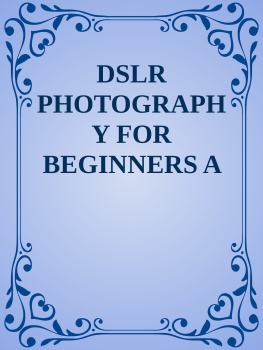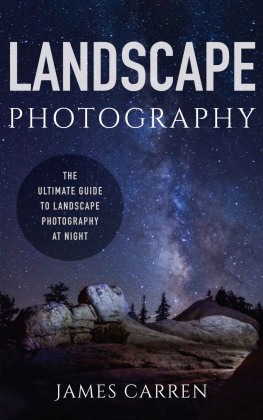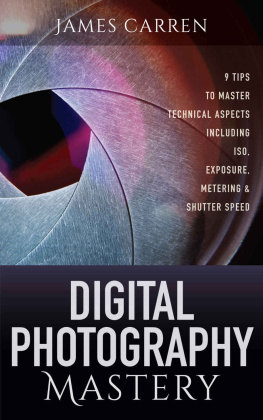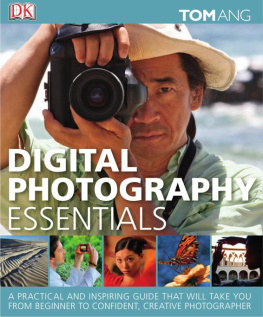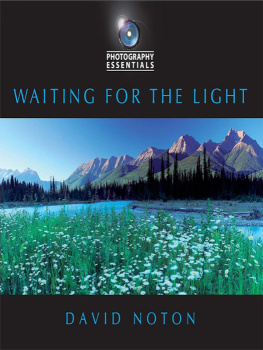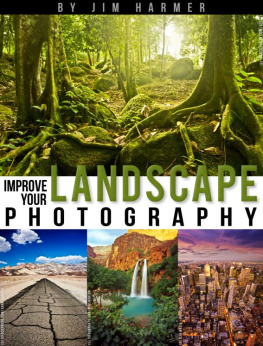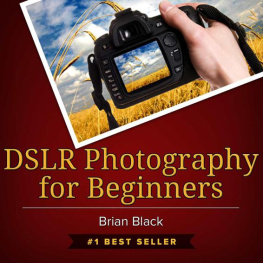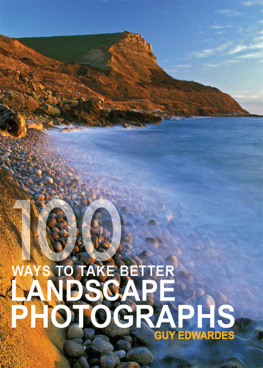Mujahid ur Rehman - Landscape Photography for Beginners: Essentials of Success
Here you can read online Mujahid ur Rehman - Landscape Photography for Beginners: Essentials of Success full text of the book (entire story) in english for free. Download pdf and epub, get meaning, cover and reviews about this ebook. year: 2015, publisher: Mujahid ur Rehman, genre: Religion. Description of the work, (preface) as well as reviews are available. Best literature library LitArk.com created for fans of good reading and offers a wide selection of genres:
Romance novel
Science fiction
Adventure
Detective
Science
History
Home and family
Prose
Art
Politics
Computer
Non-fiction
Religion
Business
Children
Humor
Choose a favorite category and find really read worthwhile books. Enjoy immersion in the world of imagination, feel the emotions of the characters or learn something new for yourself, make an fascinating discovery.

- Book:Landscape Photography for Beginners: Essentials of Success
- Author:
- Publisher:Mujahid ur Rehman
- Genre:
- Year:2015
- Rating:5 / 5
- Favourites:Add to favourites
- Your mark:
- 100
- 1
- 2
- 3
- 4
- 5
Landscape Photography for Beginners: Essentials of Success: summary, description and annotation
We offer to read an annotation, description, summary or preface (depends on what the author of the book "Landscape Photography for Beginners: Essentials of Success" wrote himself). If you haven't found the necessary information about the book — write in the comments, we will try to find it.
Landscape Photography for Beginners: Essentials of Success — read online for free the complete book (whole text) full work
Below is the text of the book, divided by pages. System saving the place of the last page read, allows you to conveniently read the book "Landscape Photography for Beginners: Essentials of Success" online for free, without having to search again every time where you left off. Put a bookmark, and you can go to the page where you finished reading at any time.
Font size:
Interval:
Bookmark:
Landscape Photography
Essentials of Success
by
Mujahid Ur Rehman

Landscape Photography: Essentials of Success
Mujahid Ur Rehman. Cape Town, South Africa
Copyrights 2015 Mujahid Ur Rehman
www.mujahidurrehman.com
Email:
Table of Contents
Who is this book for?
Landscape Photography aims at showing natural and manmade elements of this world. Throughout history, man has tried to capture the beauty he sees. The cavemen painted on the rocks using dirt or charcoal mixed with spit or animal fat. The passage of time has seen improved versions of paint, charcoal, pencil, sand and many other materials to convey the artists feelings and visual remembrance of places admired.
When it comes to photography, the process and tools have evolved over the last century and a half, and technology is rapidly fine-tuning the camera and accessories to assist the modern artist to do what his ancestors did, i.e. save the moment in the best possible way to deliver a message to others. This book is focused at individuals who are passionate about landscape photography, and want to know what type of camera, lenses, filters, accessories and software tools they require to take their photography skills to a higher level. The book also provides guidelines on composition, as tools alone cannot help capturing what the eyes and the heart see. Planning a photoshoot is also an important aspect of landscape photography, so I share my experiences with you to demonstrate how effective study of the location, weather conditions, and the natural elements involved have aided me to take some of my favourite images. Included in each section are tips, which I hope will be handy both for when you are behind the camera, and when you are choosing equipment.
Just remember, when you are busy behind the camera, it is easy to get distracted by the technicalities. Always take a pause, and admire nature by staying in it for a few moments.
Happy Shooting!
Muji, 2015
Chapter 1: Tell me your story

Landscape photography is storytelling. It is about conveying your feelings in form of photos. As a landscape photographer, you not only aim to enjoy the beauty you witness, but you help viewers connect to the moment. Your photos should serve as an invitation to others to be where you were. Your unique perspective, creative vision and feelings must be attached to a photo in order to share an emotional message. As a landscape photographer, you are a good observer and admirer of what is around you. It is this ability to enjoy such moments that inspires your creating a better story. All of the above is only possible if you know what you need, and you have the knowledge of how to use it. Lets learn together.
Chapter 2: Your Equipment
If we were broadly to categorise modern digital cameras, they come in two flavours:
- Point and Shoot (also known as compact digital cameras)
- DSLR (Digital Single-Lens Reflex)
As a beginner, I started with a point and shoot camera, which served its own purpose of simplicity and ease of capturing a memory. I soon realised that I wanted to take my hobby to the next level, and I purchased a DSLR camera for more serious results. DSLR cameras, although more expensive than point and shoot cameras, have become more affordable in recent times, as the disparity in price has narrowed. Here are some of the advantages of DSLR cameras:
Better Image Quality : They have much bigger image sensors compared to point and shoot cameras. This enables them to record light in a far better way, especially in low light conditions. Other advantages are the sensors dynamic range that make DSLRs fun to work with, and the results are better images with less noise.
Shoot What You See : When you look through the viewfinder of a DSLR, what you see is what you are going to shoot. The light entering through the lens falls on a prism that lies in the body of the camera, and gets reflected up towards the viewfinder; it is unadulterated light. In point and shoot cameras, the image seen at the back of the camera or the viewfinder is digitized; it is not real light.
Have More Control: DSLRs, as opposed to point and shoot cameras, are designed to give much more control to photographers. You can choose to select and adjust various settings on your camera including, but not limited to, aperture, shutter, ISO, white balance, bracketing, exposure compensation and focal points. Instead of the camera making decisions, you make the decisions as per the requirements of scene in front of you. Technically difficult images to capture with point and shoots become possible with a DSLR, with just some knowledge.
Ability to Change Lenses: You can change the lens of a DSLR as per the occasion, and a wide variety of lens options is available. Wide-angle lenses are built for landscape photography, telephoto lenses are for wild-life and sports, portrait lenses for people, macro lenses for magnifying small objects, and the list goes on.
So which DSLR is for me?
There are two main types of DSLR cameras, and the distinction is made on the sensor size.
- Full-frame
- Cropped
A full-frame DSLR has a sensor thats the same size as a frame of traditional film, measuring 36x24mm. Cameras with cropped sensors are anything smaller than the traditional film cameras. For example, Nikons cropped sensor models (DX), are 1.5 times smaller than their full-frame sensor versions (FX).
For landscape photography, full-frame cameras are ideal because the size helps capturing more field of view as shown in the illustration below.

Illustration 1 Full-Frame vs. Cropped Sensor
Advantages of a full-frame camera: For landscape photography, if you are shooting with natural light and low light conditions, full-frame cameras are the way to go. Full-frame cameras perform better than cropped cameras in terms of image quality, noise reduction and dynamic range. Think of a full-frame camera as a big jar. You can not only fill it with more candies as opposed to a smaller jar, but you can also fill it with more colourful candies.
Disadvantages of a full-frame camera: The downside of these cameras is that they come at a premium price. The lenses that you purchase must also support full-frame sensors. If a lens is specially manufactured for a cropped sensor camera, mounting it on a full-frame camera body will not give you a wider view as shown in Illustration 1 above. DSLRs cameras are also heavy, but that is perhaps less of a problem in landscape work than in other fields, because one so often uses a tripod.

Image 1 Full-frame vs Cropped Sensor
A full-frame camera enabled me to take this shot. With a cropped sensor camera, I would have only taken the scene as marked by the 1.5 times smaller frame. With a cropped sensor camera, you could move a few steps back to get more into your photo, but this is not always possible.
Full-frame camera motivators:
- I am serious about my interest in this field and I have the budget to buy a full-frame body and a lens.
Font size:
Interval:
Bookmark:
Similar books «Landscape Photography for Beginners: Essentials of Success»
Look at similar books to Landscape Photography for Beginners: Essentials of Success. We have selected literature similar in name and meaning in the hope of providing readers with more options to find new, interesting, not yet read works.
Discussion, reviews of the book Landscape Photography for Beginners: Essentials of Success and just readers' own opinions. Leave your comments, write what you think about the work, its meaning or the main characters. Specify what exactly you liked and what you didn't like, and why you think so.

